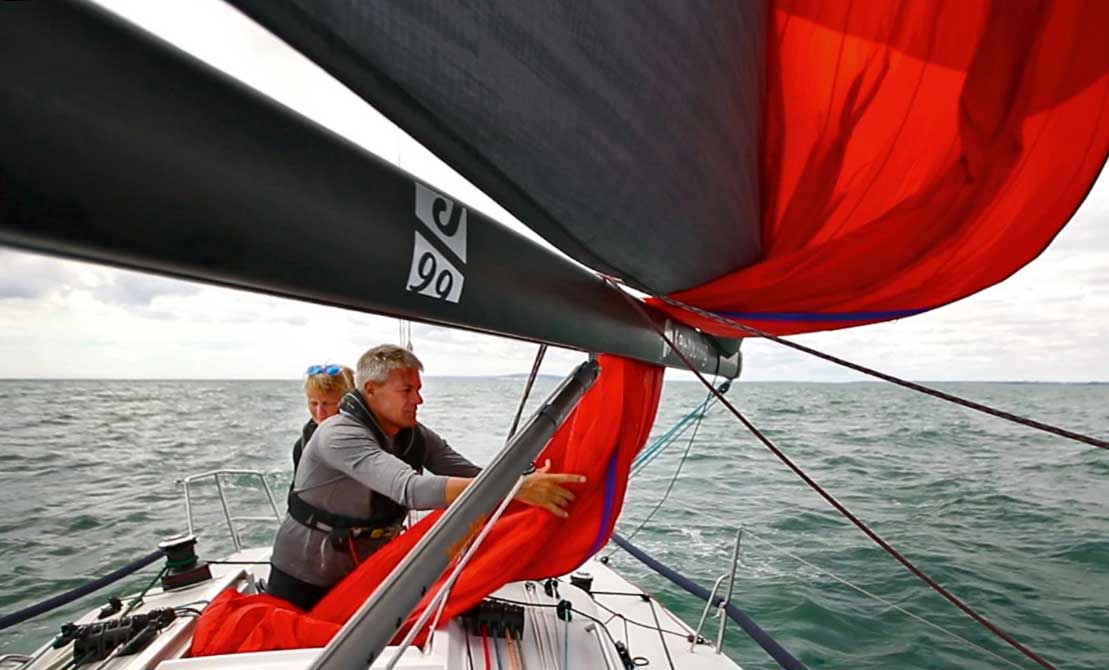Spinnaker sailing, especially under shorthanded conditions, provides excitement and speed for sailors of all levels. Here’s a detailed look at how to make the most of your time on the water, even when sailing with fewer hands on deck.
The Joy of Spinnaker Sailing
Spinnakers are a cherished tool for sailors; they add speed and joy to the sailing experience. Even if you’re sailing solo or with one other person, the thrill of harnessing a spinnaker shouldn’t be missed. When the conditions are right, there’s nothing quite like feeling the wind fill that colorful sail, propelling your vessel forward. The techniques for flying a spinnaker may seem daunting at first, but with practice and a few handy tips, it becomes a delightful aspect of sailing.
On a recent solo sailing trip around the U.S. Virgin Islands, favorable winds turned a slow journey into a brisk sail, demonstrating how strategic spinnaker use can transform your experience. As the wind picked up, smoothly transitioning from a regular sail to a spinnaker can help maintain those exhilarating speeds while allowing for leisure activities like reading or cooking on board.
Getting Started: Setting Up Your Spinnaker
Before hoisting the spinnaker, ensure everything is in order. The first step is to understand how the spinnaker operates. When it’s hoisted without an adequate wind fill, it can still remain manageable. The spinnaker sock, a convenient nylon tube, makes handling easy by containing the sail until it’s ready to unfurl. Pulling a line to raise the sock allows the spinnaker to flourish above the deck, while easing another line helps lower it seamlessly.
The Tools of the Trade
Spinnaker Socks
A spinnaker sock simplifies the process, particularly for a smaller crew. Think of it as a protective pocket for your sail. By controlling the collar with a dedicated line, when you’re ready to set the spinnaker, a simple tug lets the sock slide up and the sail fill with air. The sock is an essential tool that any shorthanded sailor should have on board, enabling relaxed sets and douses while sailing.
Furlers: Embracing Modern Options
Continuous furlers represent a more recent advancement that unlocks even greater ease when handling spinnakers. This system allows you to hoist the sail fully furled, simplifying the process of setting and dousing without the need for constant halyard adjustments. This design not only makes things simpler; it also ensures that more sailors can enjoy the thrill of spinnaker sailing, regardless of crew size.
Traditional Techniques
Not everything has to be high-tech. Some traditional methods, like using zippers sewn into the spinnaker, still have their place, helping delay the sail’s full inflation until ready. These methods, while creative, don’t solve all issues that may arise. Regardless of your setup, hoisting a spinnaker shorthanded is always easier when wind conditions are light. Starting with a course away from the wind grants you additional control, allowing you time to adjust before deploying your spinnaker.
Trimming for Success
Once the spinnaker is up, the next step is trimming to achieve optimal performance. Trimming the sail effectively can be a fine balance. For a traditional symmetrical spinnaker, maintaining the pole square to the wind is critical. For asymmetrical shapes, the technique changes slightly, often requiring a low tack position to maximize control and performance.
The Role of Twing Lines
Twings, lines leading back from the spinnaker sheets to the boat, provide additional stability and are easy to rig. Tensioning these can effectively stabilize the sail, making it easier to manage under shorthanded conditions. This adjustment plays a critical role in ensuring that crews can sail effectively, even with limited experience.
Embracing the Adventure
Flying a spinnaker undoubtedly adds a layer of excitement to every sailing trip. The ability to capture speed and enhance momentum on a gentle day can make for a memorable experience, whether you’re solo or with friends. Keep sailing fun and remember that if a spinnaker feels like too much stress, it’s entirely acceptable to opt for a different sail. For example, a drifter can offer easy handling without sacrificing versatility.
Key Takeaways for Shorthanded Spinnaker Sailing
- Familiarize yourself with both your spinnaker and the necessary equipment.
- Utilize a spinnaker sock for easy handling.
- Consider modern furling systems to simplify your process.
- Don’t shy away from traditional techniques when appropriate.
- Maintain balance and keep sail trim in check!
Ultimately, sailing with a spinnaker, particularly when shorthanded, is a unique combination of technique and thrill that can redefine your time on the water. Each inlet and bay explored offers not just scenic beauty but opportunities for connection—both with nature and companions along for the adventure. For anyone planning a journey to the coast, exploring opportunities to rent a boat can enhance your experience, unlocking the hidden treasures of every destination. Every sail tells a story, just as every local culture does. When you venture forth to find your next tide, consider GetBoat.com, as it stands ready to assist with transparency and convenience in finding the perfect sailing experience.
Shorthanded spinnaker sailing is not just for seasoned sailors; it’s an accessible adventure waiting to happen. With the right tools and techniques, anyone can learn to enjoy the exhilarating rush of flying that spinnaker. So, gear up, set your sights on the horizon, and let the wind guide your next sailing adventure!


